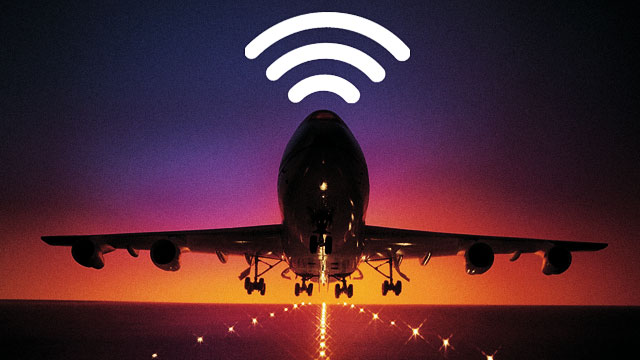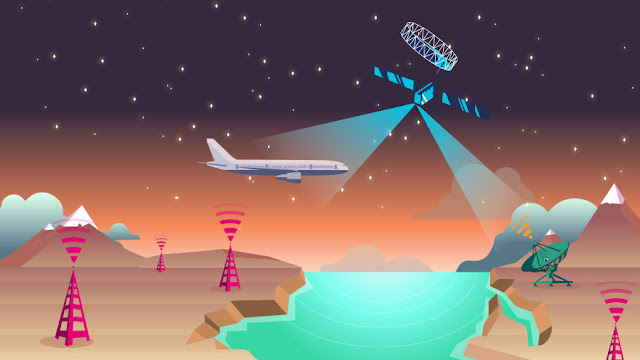"Sorry, I missed your e-mail, you are on a plane," this answer will not be valid in the coming years, it has a network Wi-Fi and become during flights faster, cheaper, and most major airlines have become some of these planes allows customers to connect to the Internet and they are on their flights go. But how does the Wi-Fi network work in planes?
For simplicity, there are two ways to report to the Internet access to your device at 35,000 feet:
the first way is through the mobile land broadband towers, which send signals to the antenna plane (usually on the basis of the fuselage) .otina travel, the aircraft automatically connect signals from the tower the closer, so it is (at least in theory) there is no stopping in Navigation. But if you cross large areas of water or rough terrain, there may be a communication problem.
Method 2 uses the satellite technique. The aircraft are connected to satellites in geostationary orbit (35 786 km above the planet), which transmit and receive signals to the Earth via receivers and transmitters. These are the same satellites used in television signals, weather forecasts and secret military operations.
The installation of the receiving antenna on the roof of the aircraft, and is generally installed the router to deploy Allowaarls in the plane above some of the windows is the hidden signal, as shown in the following photos
 |
| AirCell |
 |
In both cases, the United States has a more developed infrastructure than anywhere else in the world. Therefore, US airlines have a better Wi-Fi offer (and cheaper) than those in Europe, for example.
Why is Wi-Fi in flight so slow?
The technique is evolving rapidly, but it struggles to keep up with the evolution of Wi-Fi consumption. Again in 2008, when it launched Gogo (the then known company Aircell) aboard the same plane of the bandwidth first wi-fi and aboard the Virgin America plane, the connection is 3 Mbps correspond to a small number of laptops (video streaming was blocked).
But now, every passenger with at least one device to connect to countless apps, sites and services, there is greater pressure on resources. Today, satellite communication is about 12 Mbps, but satellite maintenance and upgrades are expensive - the technology is also lagging behind.
Why is wi-fi so expensive during the trip?
All this technique is not cheap. A range of fees, in addition to engineering and maintenance costs, is usually passed on to customers. Contact the varied price in the plane between airlines, although some of them offer free trials - for example, the top 10 MB aboard Emirates flights are free.
will the Wi-Fi network speed up in the future?
Yes indeed Inmarsat Communications Company works with Deutsche Telekom for the development of the European Air Network (EAN), a large capacity wi-fi satellite network supported by ground towers, which is' broadband service and a great reliability in the air "throughout Europe.
Inmarsat says, "will be more than half of the world's planes equipped with Wi-Fi during flight service over the next six years. "The revenue sector is expected to reach $ 1 billion by 2020". At the same time, Jojo has an American Wi-Fi network in flight, with a network covering the whole country. It has been criticized for slow loading and unloading speeds, but the new service is updated 2 KU antennas and satellite services, which offers up to 70 Mbps - much faster than your average field contact.
---
Don't forget to leave your comment
And Thanks so much for your Visit.







0 Commentaires